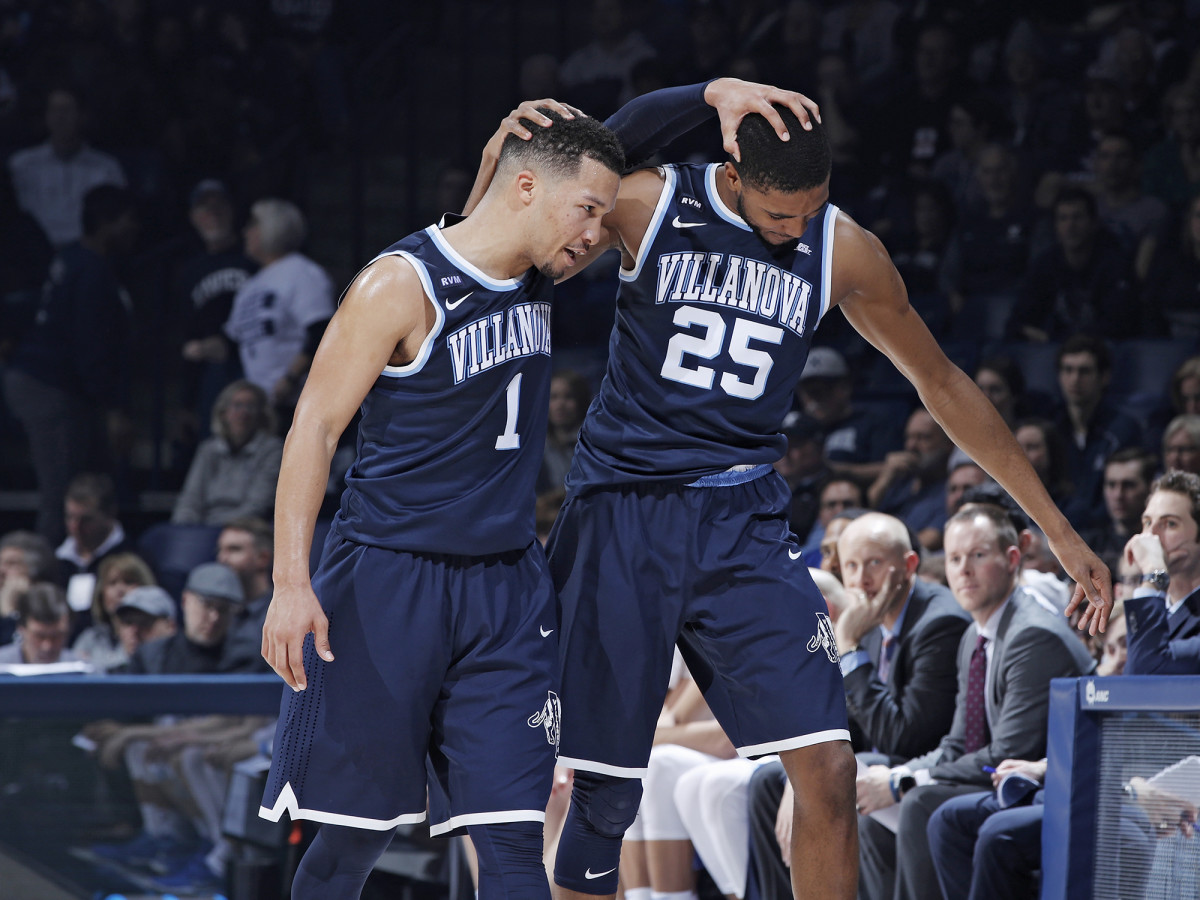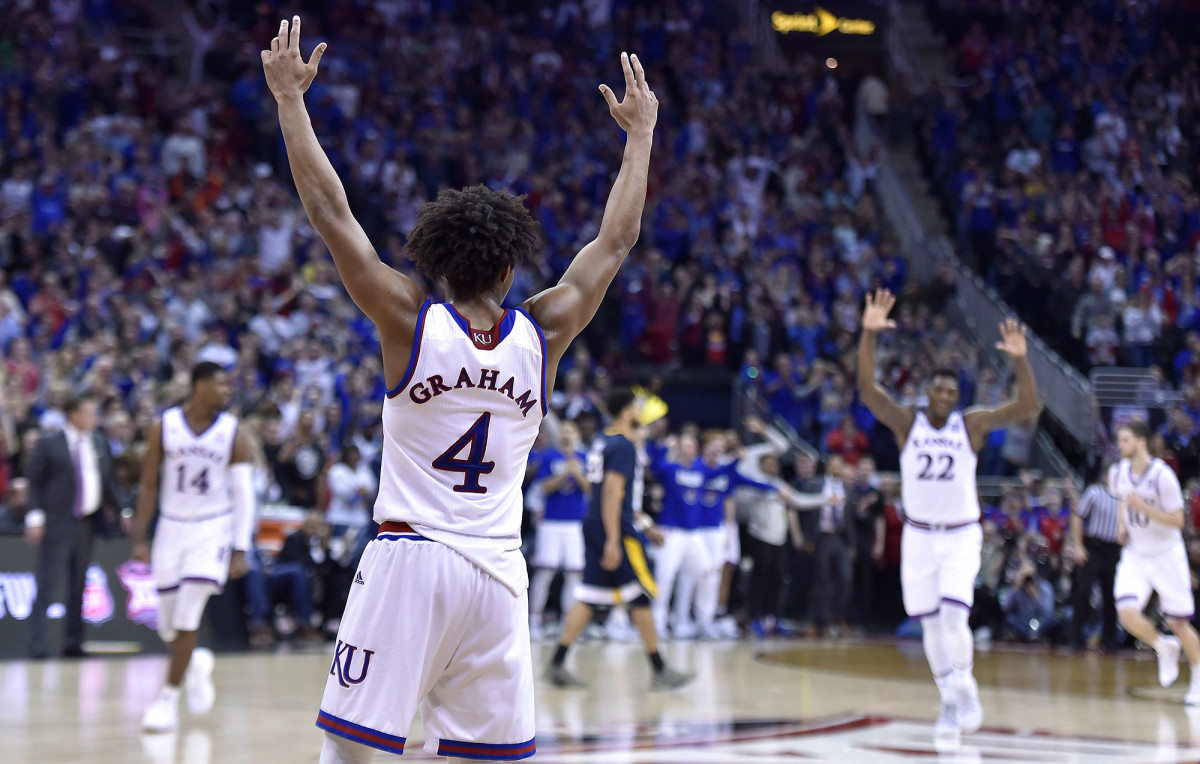Ranking the 10 Teams with the Best Chance at Winning the 2018 NCAA Tournament

A simple way to fill out your NCAA tournament bracket would be to pick the best teams—as measured by their seeds, poll rankings or a sophisticated metric—to advance no matter what. Following this strategy might produce better results than one might expect, but most people heavily weigh matchups when making their selections. After all, even elite squads may be susceptible to being sent home early by certain opponents, while mediocre outfits could have favorable paths to the Final Four because of the relatively weak opposition they’d have to face on the way there. Sports Illustrated valued both team quality and matchup difficulty in its totally unscientific ranking of the 10 teams most likely to win it all.

1. Villanova (No. 1, East Region)
The Wildcats would have been a solid pick to cut down the nets even if they were slotted into a tough region. A recent history of early flameouts outside of their run to the national title in 2016 shouldn’t convince you otherwise. Villanova is the top offensive team in the country. It’s coming off its third Big East tournament championship in four years. It has a projected NBA draft lottery pick (redshirt junior wing Mikal Bridges) draining threes and seamlessly switching defensive assignments, plus a prime National Player of the Year candidate (junior point guard Jalen Brunson) running the show. There’s not a matchup in the East that wouldn’t be a favorable one for the Wildcats.
2. Duke (No. 2, Midwest Region)
The biggest question facing the Blue Devils for much of the season was whether they would be able to defend well enough to make a deep run in the NCAAs. Following a stunning loss to St. John’s at Madison Square Garden in early February, they were ranked 69th in Ken Pomeroy’s adjusted defensive efficiency. They’ve since committed to a zone scheme and have moved up to seventh in that same metric. As the defense has perked up, the offense has remained potent. It’s not unreasonable to argue that Duke has a higher ceiling than any other team in the country. If it reaches that ceiling in the coming weeks, it probably won’t lose.
3. Virginia (No. 1, South Region)
One of the biggest storylines coming out of Selection Sunday was the difficulty of Virginia’s draw in the South region despite its status as the No. 1 overall seed in the field. In particular, the presence of two brand-name programs with projected first-round draft picks, each of which is fresh off winning its respective conference tournament title (No. 4 Arizona and No. 5 Kentucky), raised eyebrows. Here’s the thing: the Cavaliers would have to face only one of those squads in the Sweet 16, and neither of them is equipped to score with any consistency against one of the best defenses we’ve seen in recent memory. Virginia head coach Tony Bennett has a real shot at getting to his first Final Four.
4. Michigan (No. 3, West Region)
The Wolverines are going to be a chic pick to make it out of the West region after running over No. 3 seed Michigan State and No. 2 seed Purdue en route to claiming the Big Ten tournament title—that pair of wins that extended Michigan’s unbeaten streak to nine. Don’t be afraid of the hype. Embrace it. This is the best defensive team head coach John Beilein has had since leaving West Virginia to take over the program prior to the 2007-08 season, and the Wolverines don’t beat themselves offensively by taking great care of the ball. Only one squad (No. 12 seed South Dakota State) has turned it over on a smaller percentage of its possessions than Michigan.

5. North Carolina (No. 2, West Region)
Yes, the Tar Heels would have to take down Michigan in order to win the national championship. That won’t be simple. Yet North Carolina might be one of the few teams with enough offensive firepower to carve up the Wolverines’ stingy D. The Tar Heels roll out a small lineup that creates matchup problems for opponents. The nominal center in that starting five—6’8", 240-pound junior forward Luke Maye—rated out as the most accurate three-point shooter in the ACC during conference play and North Carolina does a good job extending possessions by rebounding its misses. (It ranks second in the country in offensive rebounding percentage.) Get past Michigan, and the Tar Heels could meet the weakest No. 1 seed in the bracket, Xavier, in the Elite Eight.
6. Michigan State (No. 3, Midwest)
The Spartans’ path out of the Midwest includes a potential Sweet 16 bout with a team they couldn’t beat in November, even though its leading scorer and rebounder was on the court for only 10 minutes before being poked in the eye. That team is Duke, and the Blue Devils have a credible argument for being better at their peak than any other outfit in the field. (It’s also safe to assume that the aforementioned player, freshman big man Marvin Bagley III, would be available for all 40 minutes against Michigan State in the tournament.) But the Spartans haven’t lost to a team not named Michigan since early January, and suffice it to say that head coach Tom Izzo is pretty good at this whole single-elimination tourney thing.

7. Kansas (No. 1, Midwest Region)
The Jayhawks are unfortunate to have drawn the best No. 16 in the big dance. Penn won the Ivy League in part by limiting the number of shot attempts opponents get off from behind the three-point line, a vital source of offense for a perimeter-oriented Kansas team. Assuming the Jayhawks don’t have much trouble handling the Quakers, it should be smooth sailing for the next couple of rounds. Bracket-fillers may find it more enticing to tab No. 2 Duke or No. 3 Michigan State (instead of the Jayhawks) for a trip to San Antonio, but writing off a Kansas squad that just rolled through the most challenging league in the country to claim at least a share of its 14th consecutive regular-season championship is a bad idea.
8. Purdue (No. 2, East Region)
If there’s a team that can match Villanova shot for shot in this tournament, it’s the Boilermakers. Purdue boasts five players who’ve canned at least 39% of 90 or more three-point attempts this season, including senior guard Dakota Mathias, who ranked second in the Big Ten during conference play with a 49.5 long-range make rate. The Boilermakers would have to win three games just to get a crack at the No. 2 overall-seeded Wildcats, but none of Purdue’s potential opponents through the Sweet 16 is daunting, with the possible exception of a Texas Tech squad seeded No. 3 that’s powered by a rugged defense and a talented senior point guard in Keenan Evans.
9. Xavier (No. 1, West Region)
The Musketeers have lost to only two teams since late November, Villanova and Providence. But there’s an (admittedly small) chance they would have to beat one of them, the No. 10-seeded Friars, in order to advance to the Final Four. The alternative scenarios in the West region aren’t appealing for Xavier, either. No. 2 seed North Carolina has reached the national championship game the previous two years, and few teams have performed better over the last two months than No. 3 seed Michigan. Before squaring off with the Tar Heels or Wolverines, Xavier might have to face a potential top-five draft pick, Missouri freshman wing Michael Porter Jr., in the second round.
10. Cincinnati (No. 2, South Region)
Getting to the NCAAs hasn’t been an issue of late for the Bearcats under 12th-year head coach Mick Cronin. This is their eighth consecutive trip, but they haven't reached the Elite Eight since 1996. Cincinnati definitely has the defense to do it in 2018. The Bearcats have allowed opponents to make only 40.7% of their two-point attempts this season, the second-lowest percentage in the country behind No. 3 seed Michigan State, and they turn opponents over on 22.3% of their possessions, which ranks 10th in the country. Cincinnati’s problem is its play on the other end of the court. It ranks 149th nationally in effective field goal percentage, which adjusts for the added value of three-point shots, and 279th in free throw percentage (68.7%).
